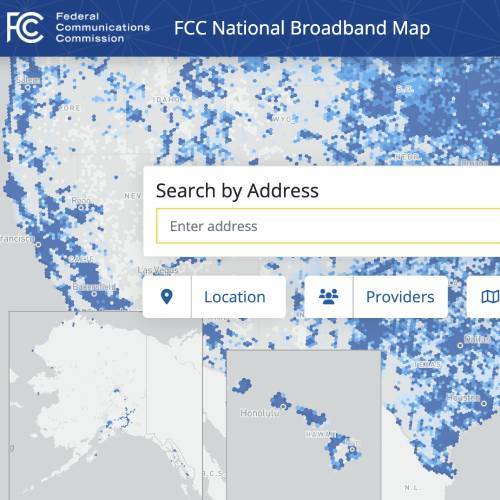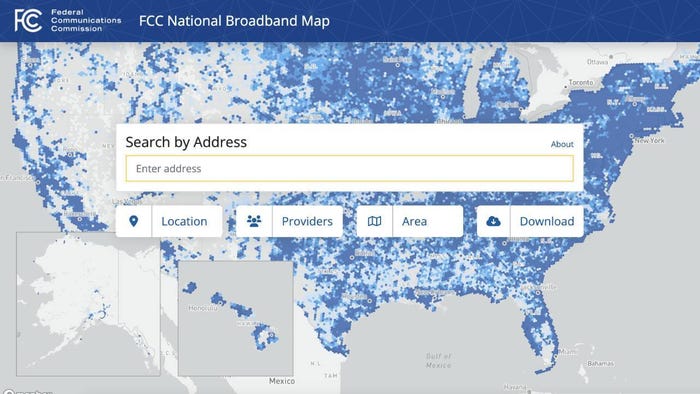Broadband map anxiety is on the rise ahead of BEAD fund allocations in June, both in terms of the FCC's readiness and regarding how the NTIA is letting states use their own data.

Broadband Map Anxiety (BMA) may not yet be a definitive disorder in the DSM-5, but a quick survey of federal filings suggests the affliction is on the rise ahead of the NTIA's anticipated allocation of Broadband Equity, Access and Deployment (BEAD) program funds on June 30.
To be sure, broadband stakeholders have been experiencing BMA for the past several years, beginning with anxiety about the need for a better map defining the nation's broadband availability. Then came worries about the FCC's data collection process and deadlines for the new map, followed by anxiety about the map's outcome and concerns that flaws with the FCC's new national broadband map won't be fixed in time for the NTIA to appropriately allocate BEAD funding.
Figure 1:  As per rules for the $42.5 billion BEAD program, every state will receive an initial $100 million, with remaining funding to be allocated based on need according to data from the FCC's National Broadband Map (pictured).
As per rules for the $42.5 billion BEAD program, every state will receive an initial $100 million, with remaining funding to be allocated based on need according to data from the FCC's National Broadband Map (pictured).
(Source: FCC)
Members of Congress have recently sought to address that last concern in a couple of ways. Back in March, a bipartisan pair of senators introduced a bill that would have delayed the NTIA's allocation of BEAD funds for seven months to allow the FCC more time to fix the map. As of this writing, however, according to Congress.gov, that bill remains in the introductory stage.
This week, the FCC also published a letter from a bipartisan group of senators, dated March 11, in which the group asked the FCC to release an update of the map every month, rather than its current cadence of every six months, to allow more entities to submit location challenges ahead of the BEAD allocation date, warning that the map will otherwise "remain significantly flawed." The lawmakers also lamented that stakeholders lacked "sufficient time" to review and challenge the map.
In FCC Chairwoman Jessica Rosenworcel's response, however, which was dated May 5, she noted that updating the map twice annually with provider data is consistent with the legislation Congress wrote – the Broadband DATA Act – mandating the map's creation, as well as FCC rules which would take 12-18 months to change, she said.
"[It] is important to understand that while the Commission and CostQuest are at work improving the Fabric at all times, the updates to this dataset are, by statute and Commission rules, only combined with the availability data reported by providers during the Broadband Data Collections twice a year," Rosenworcel wrote. "This combination of the current Fabric with provider reported availability data is what produces the National Broadband Map. This is consistent with the Broadband DATA Act, which requires the FCC to issue final rules for 'the biannual collection and dissemination of granular data'."
Rosenworcel further reassured lawmakers that the map is continually improving thanks in part to challenges submitted by local governments, with the "majority" of improvements resulting from "CostQuest's ongoing efforts to update and improve the Fabric by refining the models and processes for creating the Fabric and using updated and improved input data sources such as new and more granular parcel data."
Earlier this year, in response to concern from Congress and others, Rosenworcel released multiple statements reassuring stakeholders that version two of the map incorporates "millions of adjustments to the data" and "will address most, if not all, of the outstanding concerns."
National Broadband Map 'primacy'
With some level of dissatisfaction guaranteed when BEAD funds are allocated at the end of June, one way that states are seeking to get around flaws in federal broadband mapping is by using their own local broadband maps for their BEAD location challenge process. While some states have had their own state-level broadband data in development for years, others took advantage of federal planning funds to develop broadband maps to help them distribute BEAD dollars.
According to rules proposed by the NTIA in April for state BEAD challenge processes, following the allocation of funds in June, states would be required to "use the National Broadband Map as a starting point to identify the list of BEAD-eligible locations within their jurisdiction, prior to conducting a challenge process." Then, however, they may request approval to "modify the set of locations it proposes to make eligible for BEAD funding to reflect data not present in the National Broadband Map."
But a recent filing from industry group ACA Connects, in response to the NTIA's request for comments which closed May 5, pushed back on that idea, saying it "runs counter" both to "Congress' intent regarding the primacy of the National Broadband Map," as well as NTIA's BEAD notice of funding opportunity (NOFO).
"The ability of States/Territories to use other data sources and override the National Broadband Map's location service status designations would render ... any other NOFO provision ostensibly requiring use of the National Broadband Map's data, a nullity," said ACA Connects.
Instead, the group added, "NTIA should resolve this ambiguity by clarifying that States'/Territories' prechallenge process 'modifications' may only incorporate data that augments, rather than replaces, the National Broadband Map."
ACA Connects also called out NTIA's mention of states' ability to use their own data to "overbuild" older technologies, for example, in order to fund broadband builds in areas serviced by DSL.
"Not only would this be a significant policy determination couched as '[b]y way of example only,' it would also have the impermissible effect of replacing and superseding the NOFO's determination of what circumstances merit a challenge to claims that locations receiving DSL are 'served'," the group wrote.
Instead, ACA Connects recommended that the NTIA "address this concern by enabling States/Territories to obtain a commitment from a DSL provider to upgrade its service to future-proof capabilities by a date on which they mutually agree."
Along with their comments on the challenge process, ACA Connects also attached a letter the group sent to NTIA Assistant Secretary Alan Davidson on February 15, 2023. In the letter, ACA Connects CEO Grant Spellmeyer argued against states' use of independent data sources.
"We recognize that the FCC's maps have flaws, but these are diminishing," said Spellmeyer. "Thus, the FCC Maps provide the solid foundation on which every State and Territory challenge process must be built, and on which every location identified as unserved or underserved in a State/Territory's Initial Proposal and in a subgrant application must be based."
If states and territories are allowed to rely on alternative data sources, "a free-for-all would ensue," he added.
Finalized challenge process rules are expected sometime before the NTIA allocates BEAD funds per state on June 30. After that, states will host a challenge process in order to make final determinations on locations' grant eligibility, and their status as served or underserved, in accordance with the BEAD NOFO.
Related posts:
— Nicole Ferraro, editor, Light Reading, and host of "The Divide" on the Light Reading Podcast.
About the Author(s)
You May Also Like











